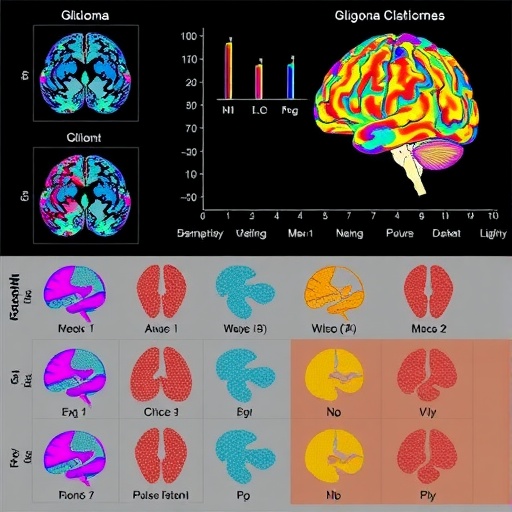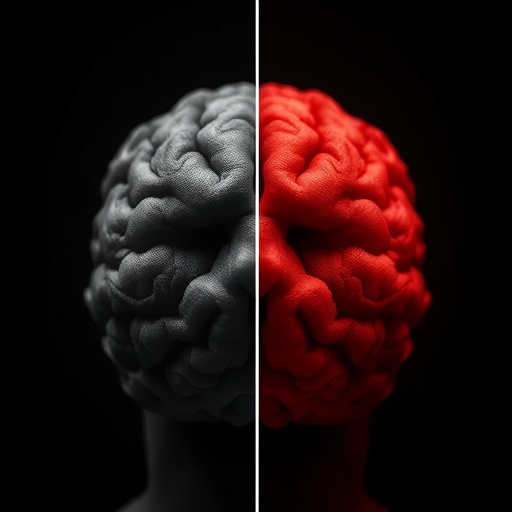A groundbreaking randomized, double-blinded, multi-center clinical trial has provided compelling evidence supporting the effectiveness of brain shunt implantation in elderly patients diagnosed with idiopathic normal pressure hydrocephalus (iNPH). This neurological disorder, often underdiagnosed due to overlapping symptoms with other age-related conditions, is characterized by the abnormal enlargement of the brain’s ventricular system and presents clinically with gait disturbances, cognitive decline, and urinary incontinence. The study’s results, published in the prestigious New England Journal of Medicine and simultaneously presented at the 150th annual meeting of the American Neurological Association, promise to reshape the diagnostic and therapeutic landscape for a condition long mired in controversy.
Idiopathic normal pressure hydrocephalus is a complex neurological syndrome marked by ventriculomegaly without significant elevation of cerebrospinal fluid (CSF) pressure, and its pathophysiology remains incompletely understood. The ventricles, which normally produce and store CSF to cushion the brain and spinal cord, become abnormally dilated. This leads to triad symptoms including decreased gait velocity, impaired balance increasing fall risk, difficulties with cognitive function, memory impairment, and loss of bladder control. These symptoms, however, are often misattributed to normal aging or other neurodegenerative disorders, complicating diagnosis and limiting effective treatment interventions.
Dr. Michael A. Williams, a neurologist and neurosurgeon at the University of Washington School of Medicine, and a leading expert in hydrocephalus, emphasizes the transformative nature of these findings. According to Dr. Williams, “this trial decisively addresses doubts about both the existence of iNPH as a distinct disorder and the efficacy and safety of surgical treatment via shunting.” His remarks highlight the study’s potential to alter clinical practice patterns, encouraging more neurologists and neurosurgeons to consider iNPH as a viable diagnosis for older adults presenting with the characteristic symptom triad and to pursue confirmatory diagnostic steps and treatment.
The clinical trial, known as the Placebo-Controlled Efficacy in Idiopathic Normal Pressure Hydrocephalus Shunting (PENS) study, enrolled 99 participants across 21 medical centers in the United States, Canada, and Sweden. All participants had confirmed iNPH diagnoses based on extensive symptom evaluation, magnetic resonance imaging (MRI) scans, and in-hospital assessments of physiological responses to spinal fluid extraction. This rigorous selection process ensures that the study’s cohort accurately represents patients suffering from iNPH. The participants underwent surgical implantation of a brain shunt system—an internal device designed to divert excess CSF from the brain’s ventricles to the abdominal cavity, thus relieving fluid accumulation.
The shunting apparatus consists of a valve implanted beneath the scalp, connected via a catheter to the brain’s ventricles and another catheter routed subcutaneously to the abdomen. This sophisticated system is adjustable post-implantation using an external magnetic device that controls the valve’s state, effectively regulating the CSF drainage. Participants were randomly assigned to two groups: one with the shunt valve activated (open) and the other with the valve kept closed, serving as the placebo group. The double-blind design ensured that neither the patients nor their caregivers or evaluators were aware of group assignment, preserving the integrity of the outcome measures.
Assessment of treatment efficacy revealed a significant improvement in the gait velocity of participants with active shunt systems. On average, these patients increased their walking speed by over 0.2 meters per second—twice the minimum clinically meaningful difference established for gait measures. Notably, 80% of the treated group surpassed this clinical threshold, while no gait improvement was observed in the placebo group. In addition to objective mobility gains, the active shunt group reported fewer falls, suggesting that the intervention substantially enhances functional safety and autonomy among elderly patients—a population particularly vulnerable to injury from balance disturbances.
Quality of life metrics and performance of daily activities showed a marked positive trajectory in the treatment cohort, contrasting with either stagnation or decline among those with inactive shunts. This finding underscores the practical benefits of surgical shunting beyond neurological symptom mitigation, echoing improvements in independent living and overall wellbeing. The trial’s initial phase concluded by activating the previously placebo group’s shunts, enabling long-term follow-up assessments to determine the durability of clinical benefits and explore correlations between MRI imaging biomarkers and symptomatic relief.
Future stages of the study integrate more comprehensive neuropsychological batteries to evaluate the full spectrum of cognitive deficits in iNPH patients, expanding on preliminary screening. This progression aims to elucidate the neurological underpinnings of cognitive impairment and monitor potential improvements attributable to shunting. Dr. Nikolas Dasher, a neuropsychologist at the University of Washington’s Department of Rehabilitation Medicine, is pivotal in spearheading these assessments, striving to clarify how surgical treatment influences cognitive domains extensively.
Epidemiologically, iNPH predominantly affects older adults, with prevalence estimates around 1.5% for individuals in their seventies and rising sharply to approximately 7% for those in their eighties. Despite this, only an estimated 5% to 10% of diagnosed patients currently receive shunt treatment, reflecting persistent clinical skepticism and diagnostic hesitation. The PENS study sets out to challenge this inertia, advocating for heightened clinical vigilance and proactive intervention to alleviate a condition that, until now, has remained underrecognized despite its substantial impact on mobility and cognition in aging populations.
The successful implementation of this trial required extensive multi-institutional collaboration, involving academic medical centers across North America and Europe. Such international cooperation underscores the global relevance of iNPH and the collective endeavor to improve management strategies. Funding support from the National Institute of Neurological Disorders and Stroke, coupled with infrastructure assistance from the NIH Trial Innovation Network, highlights the prioritization of research targeting neurological disorders that disproportionately affect elderly patients.
Dr. Williams envisions that wider clinical acceptance of iNPH diagnosis and timely surgical intervention will not only improve patient outcomes but also result in significant healthcare cost reductions by diminishing fall-related injuries and reducing the burden of chronic cognitive impairment. These anticipated benefits extend beyond individual patients to the broader healthcare system, accentuating the value of evidence-based treatments grounded in rigorous scientific methodology.
In summary, this landmark trial conclusively demonstrates that brain shunt implantation in idiopathic normal pressure hydrocephalus leads to meaningful improvements in gait, quality of life, and fall prevention. These findings dismantle prior skepticism regarding the condition’s existence and therapeutic value, paving the way for enhanced recognition and treatment uptake. As ongoing analyses delve deeper into long-term outcomes and neurocognitive effects, the medical community anticipates a paradigm shift that will redefine care for a prevalent yet underdiagnosed cause of disability among the elderly.
Subject of Research: Idiopathic normal pressure hydrocephalus (iNPH) and surgical treatment via brain shunting.
Article Title: A randomized trial of shunting for patients with idiopathic normal pressure hydrocephalus
News Publication Date: 16-Sep-2025
Web References:
10.1056/NEJMoa2503109
Image Credits: Tim Griffis/UW Medicine
Keywords: Hydrocephalus, Medical treatments, Surgical procedures, Neurological disorders, Clinical trials
Tags: American Neurological Association meeting findingsbrain shunt implantation outcomesclinical trial hydrocephalusdiagnosing normal pressure hydrocephaluselderly patients with hydrocephalusgait disturbances in older adultsidiopathic normal pressure hydrocephalus treatmentneurological disorders in agingNew England Journal of Medicine hydrocephalus studyshunt surgery for hydrocephalusurinary incontinence in elderlyventriculomegaly and cognitive decline





